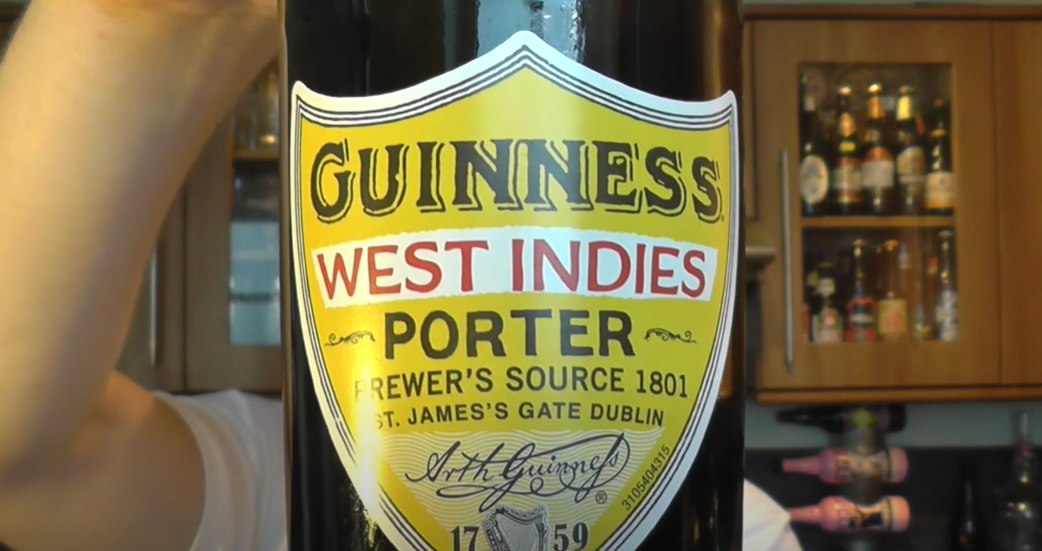
Guinness is a renowned Irish stout celebrated for its rich, dark color and creamy texture. When you take a sip, you'll first notice its smooth and velvety mouthfeel, which is partly due to the nitrogen used in its dispensing process, creating a thick, creamy head.
Flavor-wise, Guinness offers a complex profile:
-
Roasted Malts: The predominant taste comes from roasted barley, giving it deep notes of coffee and dark chocolate.
-
Bitterness and Sweetness: There's a subtle bitterness from the hops, balanced by a slight sweetness, which some describe as hints of caramel or toffee.
-
Earthy Undertones: You might detect a mild, earthy flavor, adding to its depth.
I've enjoyed Guinness for years and appreciate its distinct taste. Each sip brings a comforting blend of bitterness balanced with subtle sweetness. It's a staple in my home for its bold flavor and smooth finish.
What Is Guinness Made Of?
Guinness is crafted primarily from water, malted barley, hops, and yeast. The water used in brewing Guinness comes from the Wicklow Mountains, ensuring a pure and clean base for its production. Malted barley, roasted to a rich black color, imparts the distinctive dark hue and the deep, caramel-like flavor that Guinness is known for. Hops contribute a subtle bitterness that balances the sweetness of the malt. Finally, yeast is vital for fermentation, converting sugars into alcohol and adding a slight fruity note that complements the robust profile of this iconic stout.
What are the Different Varieties of Guinness?
The different varieties of Guinness include Guinness Draught, Guinness Extra Stout, and Guinness Foreign Extra Stout. Each variety has unique characteristics that set it apart. Guinness Draught is known for its smooth, creamy texture and mild roasted flavors.
Guinness Extra Stout offers a stronger taste with more pronounced bitterness and roasted malt flavors, while Guinness Foreign Extra Stout is richer, with higher alcohol content and bold, fruity undertones. These varieties provide distinct tasting experiences, catering to a range of preferences for stout enthusiasts.
Guinness Draught

The most recognized and widely enjoyed variety, Guinness Draught is celebrated for its smooth, creamy texture and a harmonious blend of bitter and sweet flavors. Notes of coffee, chocolate, and a subtle malty sweetness define its profile, making it a favorite in pubs and homes worldwide. The mesmerizing surge and settle effect of Guinness Draught when poured adds to its allure, making it a sensory delight in both taste and appearance.
Guinness Foreign Extra Stout

Brewed with extra hops and boasting a higher alcohol content, Guinness Foreign Extra Stout offers a bolder and more intense flavor experience. This variety is known for its pronounced bitterness, enriched with deeper notes of roasted malt. It is particularly popular in regions outside of Ireland, including the Caribbean, Africa, and Asia, where its robust profile aligns well with local tastes for stronger beers.
Guinness West Indies Porter

A tribute to a historic recipe from 1801, Guinness West Indies Porter brings a richer and more potent flavor profile than its counterparts. It is characterized by deep, rich tones of toffee, caramel, and chocolate, complemented by an undercurrent of tropical fruits that evoke the warmth of the West Indies. This variety offers a complex and layered drinking experience, appealing to those who appreciate a stout with depth and historical echoes.
Guinness 0.0

Catering to the growing demand for non-alcoholic options, Guinness 0.0 replicates the classic taste of the original Draught without the alcohol. It offers a way for more people to enjoy the quintessential Guinness experience, featuring all the trademark flavors—bitter, sweet, and malty—but in a format that suits those avoiding alcohol. This variety ensures that the inclusive spirit of Guinness reaches all corners of the globe, allowing everyone to partake in the rich heritage of this beloved brew.
Why Is Guinness So Popular for Its Taste?
Guinness is so popular for its taste due to its distinctive flavor profile. It offers a creamy texture with a rich and smooth maltiness, complemented by a subtle bitterness. The taste is deep, featuring hints of coffee and chocolate, which appeal to a wide range of palates. This unique combination of flavors makes it stand out among other beers, securing its status as a globally beloved beverage. The iconic dark color and the creamy head also contribute to its sensory appeal, enhancing the overall drinking experience.
How Does Guinness Compare to Lighter Beers?
Guinness, the iconic beer from the Guinness Brewery, differs significantly from lighter beers, both in flavor and appearance. Its rich, dark color and creamy texture set it apart from pale lagers and ales, which are usually lighter in color and body.
In terms of flavor, Guinness has robust notes of roasted malt, coffee, and dark chocolate, providing a deep, complex profile as one of Arthur Guinness's favorite beers. Lighter beers, on the other hand, tend to have more subtle flavors with a focus on crispness and refreshment. The bitterness in Guinness, often recognized as the only stout with such a pronounced profile, is also more pronounced compared to the often mild and refreshing taste of lighter beers, which can have floral, citrus, or even slightly sweet notes.
Guinness typically has a moderate alcohol content similar to lighter beers, but its fuller body and creamy mouthfeel create a richer drinking experience. Ultimately, while lighter beers are often chosen for their easy-drinking qualities, Guinness offers a more intense and layered flavor profile for those seeking a bolder option among dark beers.
-
Flavor Depth: Guinness offers a complex taste with hints of coffee and chocolate, derived from roasted barley, which is absent in many lighter beers that usually exhibit a straightforward, often hop-centric or malty flavor.
-
Body and Texture: The body of Guinness is significantly heavier and creamier compared to the light and sometimes watery mouthfeel of lighter beers. This makes Guinness more of a meal in a glass, while lighter beers are more quenching.
-
Aftertaste: The aftertaste of Guinness is lingering and rich, unlike lighter beers, which are clean and quick to finish on the palate. This enduring finish is a hallmark of its stout category.
In summary, Guinness stands out in the beer world not only for its distinct dark appearance but also for its substantial, satisfying taste profile that offers a stark contrast to lighter beers. While lighter beers are favored for their refreshing quality and ease of drinking, Guinness commands a presence with its bold flavors and hearty character, appealing to those who appreciate a beer with depth and richness.
How Does Guinness Taste Around the World?
The taste of Guinness, a legacy of Arthur Guinness, varies slightly depending on where you are in the world due to differences in brewing methods, ingredients, and environmental factors. Guinness is brewed in over 50 countries, but the main brewery is in Dublin, Ireland, where the classic stout, initiated by Arthur Guinness, is produced with a rich, creamy head and a smooth, slightly bitter flavor profile.
Here’s a look at how Guinness tastes in different parts of the world:
1. Ireland
Guinness brewed and served in Ireland, particularly at the original St. James's Gate Brewery in Dublin, is often described as the most authentic and flavorful version of the stout. It has a distinctively rich, creamy texture with a balanced, slightly bitter taste. The nitrogen-infused pour contributes to its velvety mouthfeel and signature creamy head. Many people believe the freshness of the beer, coupled with the specific Irish ingredients, including local water, make a significant difference in its taste. The experience of drinking Guinness in Ireland is also enhanced by the traditional serving methods and the cultural pride associated with this iconic Irish beer.
2. United Kingdom
Guinness in the UK is quite similar to the Irish version, as it is imported directly from Dublin. However, subtle differences in flavor are sometimes noted, with a slightly sharper and more carbonated profile. This can be attributed to local serving practices, such as the popular Guinness Extra Cold, which is served at lower temperatures, intensifying the beer's crispness and altering its mouthfeel.
The overall flavor remains smooth and creamy, but the experience of drinking Guinness in the UK is influenced by variations in tap systems and pub practices, which may affect the final taste.
3. United States
In the United States, Guinness tends to taste a bit more carbonated and can have a somewhat sharper bitterness compared to the Irish version. This difference is due to a combination of factors, including the longer shipping times, variations in storage, and the way Guinness is served, often colder and with more carbonation.
The Guinness Open Gate Brewery in Maryland produces some of the Guinness consumed in the US, but the classic stout is still imported from Dublin. However, the nuances of transportation and handling contribute to a distinct taste experience that may differ slightly from what is found in Ireland.
4. Africa
Guinness in Africa has a unique flavor profile, distinct from that of Ireland or the UK. In countries like Nigeria, Ghana, and Cameroon, Guinness is often brewed locally with different ingredients, including sorghum or maize, which can give it a sweeter, more robust, and maltier taste.
African Guinness varieties, such as Guinness Foreign Extra Stout, tend to have a higher alcohol content and are brewed to withstand warmer climates, which also affects the flavor. The local production techniques and regional ingredients make African Guinness a distinctly bold and full-bodied version of the classic stout, often enjoyed for its rich, complex flavors.
5. Asia
In Asia, Guinness is widely available and is brewed under license in countries like Malaysia and Indonesia. The taste here is slightly more malty and can have a sweeter finish, influenced by local ingredients and regional brewing methods. In some cases, Guinness variants with higher alcohol content, like the Foreign Extra Stout, are popular due to their fuller flavor and longer shelf life in tropical climates.
The Asian versions of Guinness might not have the same creamy texture found in Ireland, but they offer a rich, satisfying taste adapted to local preferences, often with a smoother finish that appeals to the palate of the region.
How Do the Ingredients Impact the Taste of Guinness?
The ingredients in Guinness significantly shape its distinctive taste. The use of roasted barley imparts a deep, coffee-like bitterness balanced by a subtle caramel sweetness from the malt. The hops add a mild herbal and floral note, enhancing the complexity of the flavor profile. The yeast contributes to the rich, creamy texture and brings forth a slight fruitiness. This unique combination results in Guinness's iconic smooth and malty flavor with a hint of chocolate and coffee undertones, rounded out by a creamy finish.
Does Guinness Taste Different on Draught Versus Bottled?
Yes, Guinness does taste different on draught versus bottled. Draught Guinness often presents a smoother, creamier texture with a more pronounced roasted malt flavor, thanks to its unique nitrogen-infusion process. In contrast, bottled Guinness, which uses carbon dioxide for carbonation, offers a sharper, crisper mouthfeel with a slightly more bitter finish. The serving method distinctly influences the flavor profile and sensory experience of this iconic stout.
How to Enjoy the Full Taste of Guinness?
To fully enjoy the rich and complex taste of Guinness, there are a few key tips and techniques to consider. These can enhance the flavor and provide an authentic experience, whether you’re enjoying a pint at home or in a pub.
1. Serve at the Right Temperature
To enjoy the full taste of Guinness, it’s essential to serve it at the proper temperature, which is between 42°F and 48°F (5.5°C to 9°C). At this range, the stout’s rich flavors and creamy texture are at their best, allowing you to taste the nuances of roasted malts and subtle sweetness.
If served too cold, the flavors can become muted, and the beer’s characteristic smoothness is diminished. Serving Guinness at the right temperature ensures that each sip delivers the perfect balance of bitter and sweet, enhancing your overall experience.
2. Use the Correct Glassware
The iconic tulip-shaped pint glass is recommended for Guinness, as it helps to develop the stout’s signature creamy head and enhances its aroma. The shape of the glass also influences how the beer settles, allowing for the classic two-part pour that Guinness is known for.
To achieve the perfect pour, tilt the glass at a 45-degree angle and pour until it’s about three-quarters full, then let it settle before topping it off. This pouring technique ensures that Guinness is served with the ideal head and a smooth, rich mouthfeel, maximizing your enjoyment of the beer’s flavor and texture.
3. Savor the Flavor Layers
Guinness offers a complex flavor profile, with layers of roasted malts, hints of coffee, and subtle chocolate notes. To truly appreciate these flavors, it’s best to take small sips and let each one linger in your mouth for a moment before swallowing. This way, you can savor the balance of bitterness and sweetness and notice the beer’s smooth, creamy texture. By taking your time with each sip, you allow the full depth of flavors to unfold, making for a more rewarding tasting experience.
4. Enjoy in a Pub Setting When Possible
The atmosphere of a traditional pub, especially in Ireland, can greatly enhance your Guinness experience. In these settings, Guinness is typically served at the optimal temperature and poured with expertise, resulting in a rich, satisfying pint.
Additionally, the pub’s ambiance contributes to the experience, as Guinness has a cultural significance that’s best appreciated in a lively, social setting. If available, trying different Guinness variants, like the Foreign Extra Stout or Guinness Draught, can add variety to your experience, as each offers a unique take on the classic stout.
5. Pair with Complementary Foods
Guinness pairs exceptionally well with hearty foods, particularly those with rich, savory flavors. Classic pairings include beef stews, seafood like oysters, and roasted meats, as these foods complement the stout’s bold taste and enhance its creamy texture.
For those with a sweet tooth, Guinness’s chocolate undertones make it an ideal match for desserts like chocolate cake or ice cream. Pairing Guinness with the right foods not only enhances the beer’s flavor but also creates a satisfying culinary experience that brings out the best in both the stout and the food.
FAQs On What Does Guinness Taste Like
1. What does Guinness taste like?
Guinness exhibits a distinctive malty sweetness and rich coffee-like bitterness. It often carries hints of chocolate and caramel.
2. Is Guinness bitter or sweet?
Guinness balances both; it starts with a mild sweetness and finishes with a robust bitterness.
3. Does Guinness have a strong flavor?
Yes, Guinness has a bold, roasted flavor profile that stands out prominently.
4. What aromas can be detected in Guinness?
You can detect aromas of coffee, malt, and a slight yeasty scent in Guinness.
5. Is the taste of Guinness similar to other stouts?
Yes, while Guinness shares similarities with other stouts, its smooth, creamy texture and distinct blend of bitterness set it apart.
